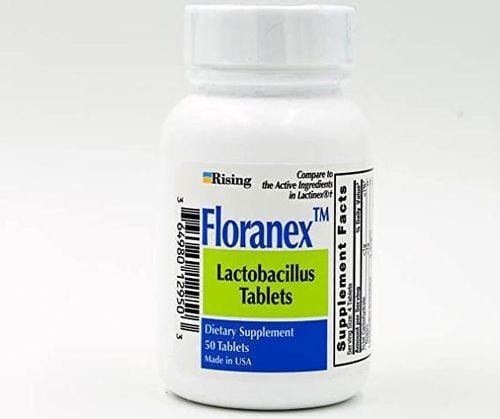This is an automatically translated article.
The vagina is designed to help us menstruate and give birth while also enjoying the sexual realm. So, are many women's vaginas really the same? And what are the signs that the vagina is normal or not?
1. Vagina
The vagina is a tube about 8cm long that leads from the cervix (cervix) down to the vulva, where it opens between the legs.
The vagina is very elastic, so it can easily stretch around a man's penis or around a baby during labor. The vagina varies in shape, size, and color. Some people are small and egg-shaped, others are large and cylindrical. The color can vary from light pink to dark brownish red. However, it is important that the vagina is functioning properly.
Pelvic floor exercises can help keep your vagina in shape. In addition, applying these exercises will create substances that are very good for maintaining the firmness of the pelvic floor and can improve sexual function.
Some simple exercises also help maintain good vaginal function, with walking and running help to tone the pelvic floor and help ensure good general health.
2. Vaginitis
Vaginitis is an inflammation of the vagina, which can cause discharge, itching, and pain. Some common types of vaginitis include:
Bacterial vaginosis, which results from the change of bacteria normally present in your vagina into an overgrowth of other organisms. Yeast, Candida albicans is often the cause of this condition. Trichomonas, caused by a parasite and usually sexually transmitted

Viêm âm đạo do nấm Candida albicans là một trong số loại viêm âm đạo phổ biến
The cause of vaginitis is usually a change in the balance of bacteria in the vaginal environment or an infection. Or it could be that estrogen levels drop after menopause and certain skin disorders can also cause vaginitis. The cause depends on the type of vaginitis you have:
Bacterial vaginosis. The most common cause of vaginitis is a change in the normal bacteria present in your vagina, resulting in the formation and overgrowth of other microorganisms. Normally, more bacteria are found in the vagina (lactobacilli) than other bacteria (anaerobic bacteria) in your vagina. If anaerobic bacteria become too numerous, they disrupt the balance, causing bacterial vaginosis. Bacterial vaginosis seems to be related to sex, especially if you have multiple sex partners or new partners, but the infection also occurs in women who do not have sex.
Yeast infection. These occur when there is an overgrowth of fungal microorganisms, usually C. albicans, in your vagina. C. albicans also causes infections in other moist areas of the body, such as in the mouth (thrush), skin folds, and nail beds. Fungi can also cause diaper rash. Trichomoniasis infection. This common sexually transmitted infection is caused by a microscopic single-celled parasite called Trichomonas vaginalis. This microorganism can be spread by having sex with an infected person. In men, this organism is commonly transmitted through the urinary tract, but usually causes no symptoms. In women, trichomoniasis usually infects the vagina and can cause symptoms. Inflammation also increases a woman's risk of other STIs. Vaginitis is not caused by an infection. Chemicals used in vaginal washes, such as sprays, douches, scented soaps, scented cleansers, and spermicidal products, can cause allergic reactions or irritate tissues. vulva and vagina. Foreign objects, such as forgotten tissues or tampons, in the vagina can also irritate vaginal tissues. Vaginal atrophy - Genitourinary syndrome of or menopause. Decreased estrogen levels after menopause or surgical removal of the ovaries can cause the lining of the vagina to thin, sometimes leading to irritation, burning, and dryness of the vagina.

Viêm nhiễm âm đạo do vi khuẩn có thể xảy ra ở những phụ nữ không quan hệ tình dục
3. Vagina quiz
The vagina has several parts, including labia and clitoris. The vagina is a narrow muscular tube that connects the uterus and cervix to the outside of the body. The labia and clitoris are part of the vulva, outside the vagina. The labia consists of the lip-like flesh surrounding the vaginal opening, and the clitoris is a very sensitive area located near the top of the inner labia. The vagina has a standard shape and size. Research indicates that there is no standard size or shape for a woman's vagina; and there will be many differences among women of reproductive age. Factors such as age and height help determine the size of an adult woman's vagina. Underwear may not be hygienic. Because underwear is a tight-fitting band of fabric, it can transport bacteria and stool from the rectum to the vagina and urinary tract if it slips forward. If you're struggling with diarrhea or other gastrointestinal issues, it may be especially wise to save your panties for another day. The G-spot is a specific area on the vaginal wall, there is no consistent evidence that the G-spot actually exists. In 1950, German physician Ernst Grafenberg suggested that an area of the anterior vaginal wall was very sensitive to touch and that stimulation of this area could provide orgasm, but debate over its existence still persists. ongoing. You shouldn't leave tampons in for longer: Leaving tampons in the vagina for longer than 8 hours can lead to toxic shock syndrome (TSS), an infection caused by bacteria. Symptoms of TSS include high fever; lightheadedness or fainting; a sunburn-like rash; vomiting or diarrhea ; muscle aches or weakness; redness in the eyes, mouth, throat... Do not douche because: Doctors do not recommend douching because it can change the pH balance of the vagina, which can lead to yeast infections. It can also spread the infection to your uterus and increase your risk of PID, an infection of a woman's pelvic organs. Any odor you notice may be coming from outside the vagina, near the vulva. Keep that area clean with gentle soap and water to prevent that. Your vaginal discharge should stay the same and not change in quantity, color, or consistency. Your vaginal discharge will change in quantity, color, and consistency throughout your menstrual cycle. It can be clear or milky, and the consistency can be creamy, sticky, or similar to egg white, depending on what stage of your cycle you're in. You have a normal vaginal odor.

Dịch âm đạo sẽ thay đổi về số lượng, màu sắc và độ đặc trong suốt chu kỳ kinh nguyệt
Kegel exercises, which strengthen the pelvic floor muscles, can improve orgasms. Kegels are exercises in which you squeeze the muscles around your vagina as if you were trying to stop the flow of urine. Kegels can help prevent urine leakage as well as stool or gas by keeping the uterus, urethra (the tube that carries urine out of the body from the bladder) and bowels from sagging into the vagina. . Strengthening these muscles can improve orgasms. Unusual increased discharge, a change in the smell of vaginal discharge, and itching or discomfort around your vagina are all signs of vaginitis, which can be caused by a number of reasons that upset the balance of a vaginal discharge. healthy vagina. These include douching or using feminine hygiene sprays, pregnancy, infections, or antibiotics. These symptoms may also reflect inflammation of the vagina, vulva, or cervix. Pain during sex is very rare, common with sex; Nearly three in four women will experience pain during intercourse at some point in their lives. There are many possible causes for this type of pain, and you should see your doctor if you experience it. However, the American Congress of Obstetricians and Gynecologists recommends the following advice: Use lubricants; make time for sex when neither you nor your partner are tired or nervous; try painless sexual activities; or try sensual activities, like a massage. If you gave birth by cesarean section, all of your children must be delivered that way. However, women who give birth by cesarean section can choose to go into labor after cesarean section (TOLAC) and attempt a vaginal birth (vaginal delivery after cesarean section, or VBAC). Between 60% and 80% of women who choose TOLAC are able to give birth vaginally. At Vinmec International General Hospital, there is a basic gynecological examination and screening package to help customers detect gynecological diseases early for timely treatment. If you have a need for consultation and examination at the Hospitals of the national health system, please book an appointment on the website for service.
Please dial HOTLINE for more information or register for an appointment HERE. Download MyVinmec app to make appointments faster and to manage your bookings easily.
Reference source: webmd.com













